Tiger King has taken the world by storm. The Netflix series about the Tiger King Zoo owner Joe Exotic and his feud with sanctuary owner Carole Baskin fascinated people across the world. While the Netflix docuseries was definitely captivating, as a wildlife biologist, it was extremely frustrating to watch.
While I understand the series was about the human story and eventual crime, it brought up a lot of issues about animals in captivity. The biggest issue was private individuals breeding big cats for cub petting. These zoo owners made a lot of claims about wildlife and conservation, but the series included no unbiased experts to evaluate their statements. I therefore wanted to blog about it to provide the perspective of an unbiased wildlife with conservation expertise.
But before I started blogging, I wanted to know what people were saying about Tiger King so I could identify what their biggest questions were. I tuned to social media to ask questions.
In response to this question posted on my Facebook page, one friend invited me to a private Facebook discussion group on Tiger King so I could post the same question there. I did ask people what questions they had, but I also skimmed a lot of the conversations in the group.
One thing was obvious: most people supported and even loved Joe Exotic. They said over and over again that Joe Exotic loved his animals and that Carole Baskin’s Big Cat Rescue was the exact same thing as Joe Exotic’s Zoo except with the word sanctuary stamped on it. Cardi B even famously tweeted that she was going to set up a GoFundMe to get Joe Exotic out of jail. President Trump said he would look into pardoning him.
Bout to start a gofundme account for Joe .He shall be free.
— Cardi B (@iamcardib) March 28, 2020
As a wildlife biologist, it was clear to me that the sanctuary and zoo were greatly different simply by the fact that Joe Exotic bred big cats for cub petting. Big Cat Rescue does not breed, and therefore do not contribute to the captive big cat overpopulation problem in the United States.
But the directors made it really difficult for people to tell the difference between sanctuaries and zoos, and the specific facilities featured in Tiger King. I even left feeling unsure if Big Cat Rescue was legit or a phony sanctuary. At the end, people left the documentary feeling sorry for Joe Exotic, believing that he was remorseful about the ways in which he took care of his animals.
I also worried that after this documentary, people will lump all zoos together. In actuality, there is a huge range of higher quality, more ethical zoos and really bad ones. Some are so bad that honestly it would be more human to euthanize the animals.
This post is part of a series to point out the facilities in Tiger King so you can see the differences for yourself. Because there is so much to go over, I decided to evaluate them one by one, in addition to Myrtle Beach Safari.
I looked at each facility in terms of its conservation, educational, and animal welfare standards based on my knowledge of wildlife biology as a wildlife biologist for 17 years, and experience working at AZA-accredited facilities for 7 years.
Evaluation of Tiger King Zoo
Before we get started, Joe Exotic is no longer the current owner of the Greater Wynnewood Exotic Animal Park (GWEAP, now called Tiger King Park?). It is now owned by Jeff Lowe. Some of the information in this post will apply to Joe Exotic, while some will apply to Jeff Lowe.
From what is posted on the GWEAP’s website and social media, not much has changed since Joe Exotic left in reference to the things I am writing about. I gathered the information to evaluate the GWEAP from the Netflix Tiger King series and the Wondery podcast Joe Exotic.
Conservation at Tiger King Zoo
Zoos actually do contribute to important conservation projects. They participate in species reintroduction programs, fund research and conservation programs for animals in the wild.
At one point in the Netflix documentary, Joe Exotic says:
“Cub petting is the best educational tool…You get 15 minutes with a baby tiger…and you say look we got to save the rainforest…because you’re killing this baby tiger’s (habitat). They leave with a whole different attitude.”
Joe Exotic, exotic animal owner
This is a legitimate argument that zoos make. Animals serve as animal ambassadors, representing the entire species in the wild. These animals offer an opportunity for people to connect with wildlife, something that has been shown to be important in developing pro conservation behaviors and attitudes.
But in order to truly be an animal ambassador, people need to leave the encounter with changed attitudes and behaviors.
For instance, in the case of tigers, the things that people can do here in the United States to help the conservation of tigers in the wild are:
- Donate to legit conservation organizations like the Wildlife Conservation Society, Conservation International, and the World Wildlife Fund (to name a few, there are many)
- Make sure the palm oil you buy is sustainable, and encourage companies to join the Roundtable on Sustainable Palm Oil (RSPO). For companies that are already part of it, encourage them to the RSPO to have higher conservation standards
- Reduce your impact on climate change, which affects the tiger’s habitat
- Vote for politicians that support conservation efforts internationally and pressure your representatives to take action. The United States sets aside funds specifically for international endangered species research.
Joe Exotic and the other exotic animal owners never talked about those things. Yes, it’s possible the documentary cut out scenes where they said it but based on the information posted on their website and social media, it is doubtful those messages are spread.
If those messages are not passed along, people may leave with the information that tigers are an endangered species in the wild, but how does that information help tigers in the wild?
On a side note, lots of tigers don’t live in the rainforest, but instead grasslands, dry forests, and shrublands.
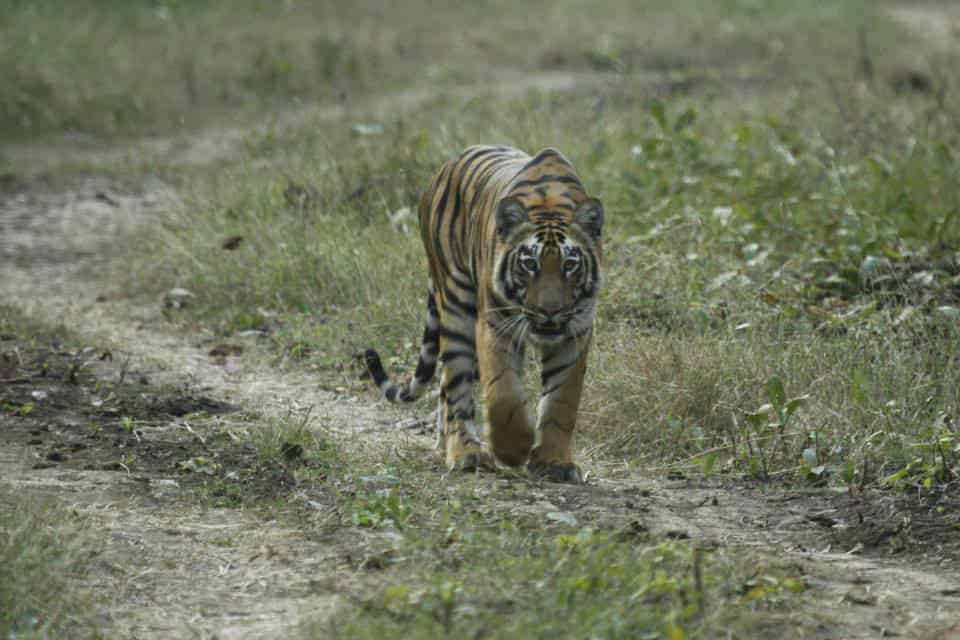
The other argument for conservation is that breeding endangered species contributes to conservation. But the tigers that Joe Exotic and Jeff Lowe breed for cub petting cannot be released into the wild. They will not know how to hunt, a skill taught by their mothers. Reintroduction programs are extremely hard to do and take careful planning and consideration. There is always no or very little human contact.
Also, one of the biggest problems with tigers is that they’ve already lost a lot of habitat in their range. In India, where 70% of all tigers live, tigers are restricted to protected areas. Their populations have grown, but now it is difficult for them to disperse in between protected areas to prevent inbreeding. Here, they face human wildlife conflict.
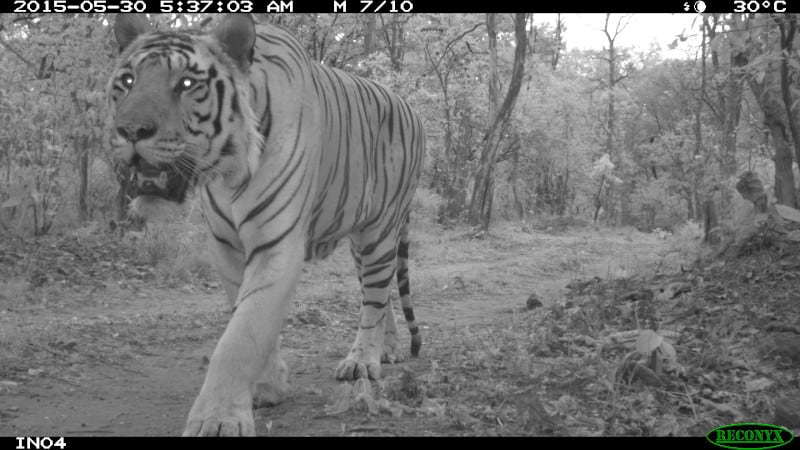
Zoos can contribute to conservation if they acquire and rehabilitate injured wildlife and return them to the wild.
On the GWEAP’s website, it says the “zoo has never said no to any animal in need. No animal is too big or too small for our team of animal warriors to try to save. The zoo team has performed the largest one rescue of Tigers ever in the United States with all 42 tigers at one time coming to the Greater Wynnewood Exotic Animal Park.”
There is no evidence of the GWEAP doing this on their website. They boast about a video of a cow rescue but include no link to the video. Taking in captive exotic animals from other places is not conservation because these animals can never be released to the wild. This would be the work of a sanctuary.
I did not find any information about the GWEAP donating money to conservation organizations or funding research projects on animals in the wild.
When Joe Exotic owned the zoo, he was constantly blowing stuff up around the zoo on his property. This likely killed lots of local wildlife (fish, birds, insects, small mammals) and polluted the lake around his property. When watching the docuseries, you can see lots of garbage in the water, especially as the episodes progress.
Finally, in one scene, Jeff Lowe and his wife gave the lions balloons to pop. This is so frustrating as a conservation biologist. Balloons lead to many wildlife deaths every year. The lions could technically ingest them and get sick. More likely the balloons will get washed away into the lagoon, eventually making their way to local wildlife, which may think they are food and eat them.
Education at The Tiger King Zoo
It appears that there is little to no education occurring at the Tiger King Zoo. There is no information about animals or conservation on the website. When looking at TripAdvisor, I did see a few signs with some educational information (Here and here. Not sure if they are accurate).
In the Netflix show, you see that Joe Exotic created an Internet series to talk about the zoo and his animals. According to people interviewed in the documentary, the show started off talking about animals, but after it got going, transitioned to shows on animal rights or Carole Baskin. At one point, someone said 9/10 shows were on those topics.
When Joe Exotic was trying to show that Big Rescue’s cages are small (but showing only a small section of a cage called a lockout cage), he misidentified the cat in the photo. “That mountain lion is sticking its head through a hole in the fence to drink water.” It’s actually a bobcat or Siberian lynx.
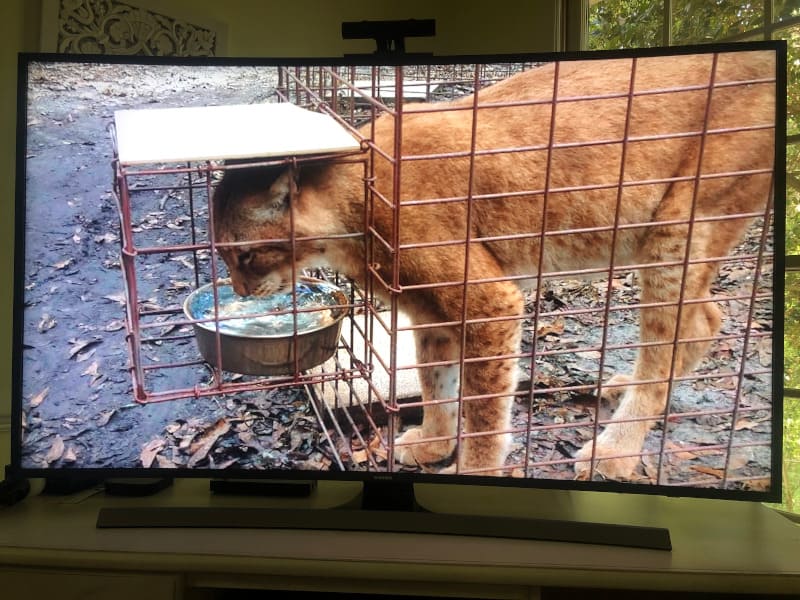
There are other errors on the website:
“White tigers come from a genetic mutation called a hetrosigus tiger which is an orange Bengal tiger that carries the white gene to produce the white coat.”
The word should be heterozygous, which refers to carrying two different variations of a gene. You need two heterozygous individuals, both of which need to be carriers of the recessive alleles for this to occur. Breeding white tigers is also not a good idea because they are frequently inbred.
“Hybreeding is something that happens in the wild. This is how new species are found and discovered. Do you think Noah had all of these on one Ark? They are all the same and derived from one cat millions of years ago or they could not breed and produce off spring making a hybrid cat.”
Jeff Lowe and others breed hybrids of big cats. It is unclear if the website is referring to hybrids like ligers (lion and a tiger) or hybrids of subspecies of tigers in the above statement. If it’s in reference talking to ligers, then the above is incorrect. Lion and tiger range in Asia does not overlap.
Hybrid animals can be found in the wild, but it’s rare. When given the choice, animals will choose to mate with their own spies over a different one. But when populations become really small, as in the case of the red wolf, they will hybridize with other species (for the red wolf, they hybridize with coyotes). If the website is referring to subspecies of tigers, scientists have actually tried to keep the subspecies separate to preserve their genetic diversity.
The above statement refers to the Bible (Noah’s Ark), but then talks about cats evolving millions of years ago. This is a direct contradiction to his ark reference, which is of course, not true, and not how animals evolved.
The website continues on to say “Hybrid cats will be the only ones to survive climate change in todays world. As our climate changes and loss of habitat due to destruction hybrid cats are the only ones that will be able to adapt to these changes.”
Again, if this is referring to ligers, then this is definitely not true, but it’s even false when referring to hybridization within the subspecies. Sure, it’s possible that hybrid subspecies could have hybrid vigor, a term used to describe hybrids that are more fit than the original species, but the opposite could also happen. We just don’t know.
Animal Welfare at Tiger King Zoo
Joe Exotic is very good at convincing you that he loves his animals. In the series, he says “I know they have a heart and a soul and a mind.” But everyone around him also said he lied a lot. This is really apparent in the bonus episode on Netflix’s Tiger King, where Joel McHale interview the people featured in the docuseries after the show became a sensation.
Maybe Joe did love his animals, but not enough to take care of them well. There were and are still are so many animal welfare concerns at the Tiger King Zoo.
First and foremost, Joe Exotic shot tigers just to make space for new animals. He claims that he euthanized the five tigers that were discovered buried on his property because of old age and being sick. Multiple people in the Netflix series final episode confirmed that he killed them to make space or simply because he was angry. Rick Kirkham saw him do it more than once and the head keeper said one was 2-3 years old.
The fact that Joe and Jeff Lowe breed big cats for cub petting is innately cruel and abusive in itself. To do this, one has to constantly breed tigers and take the young away from their mothers the minute they are born, breaking this important bond. After the animals are older than 12 weeks, they can no longer be handled for cub petting and it is unclear what happens to all of them. Because no place can house an endless supply of big cats, some are either sold or killed, both of which are illegal.
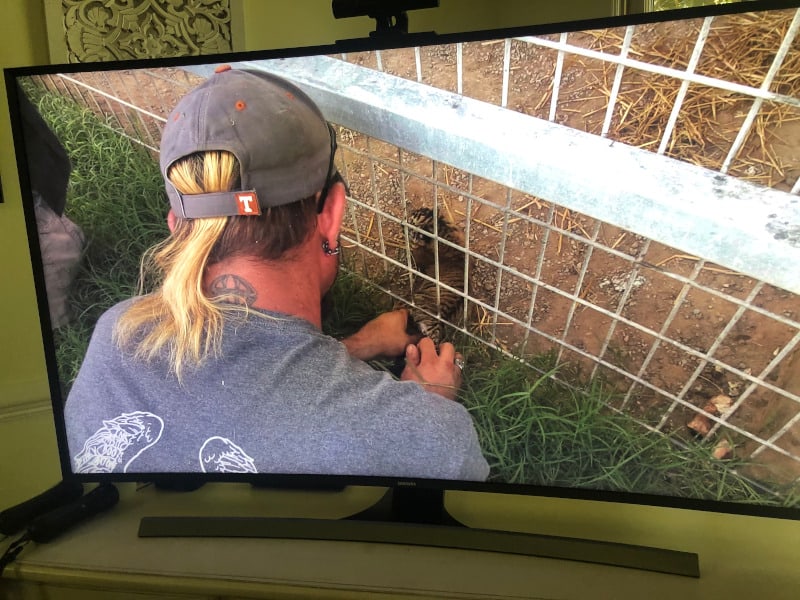
There are moments in Tiger King where you see Joe Exotic and Jeff Lowe both get physical with their animals. Joe prods tigers with a large stick when they are being transported. At first I was upset, but later was told this was a tranquilizer. I actually suspected it because he was doing it so forcefully and when the tigers were being transported. Jeff Lowe forces a lion down when it gets a little rambunctious with him and force closes its mouth shut. Rick Kirkham also said Joe Exotic would tranquilize tigers to pose with them.
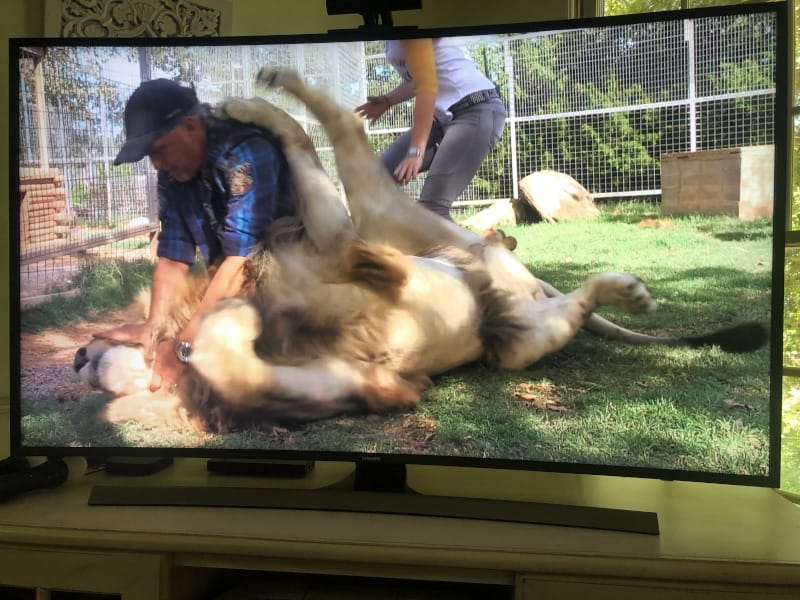
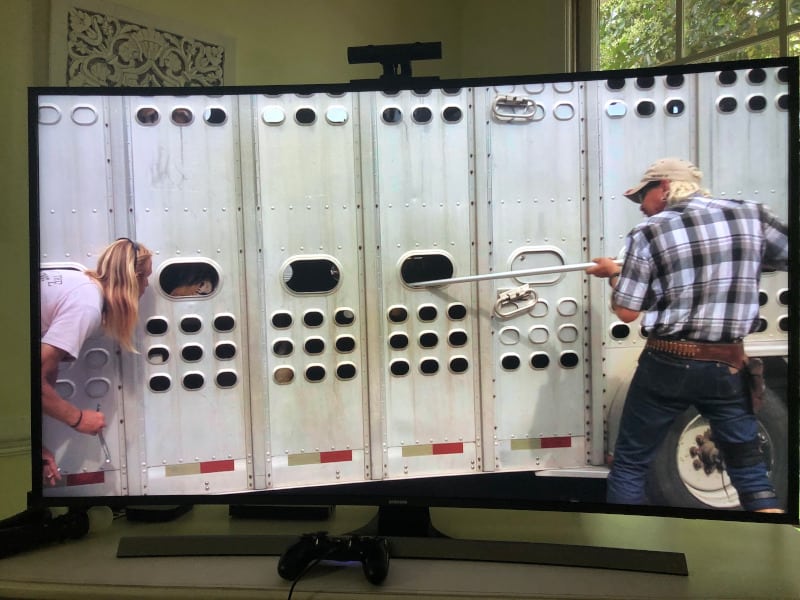
The Wondery podcast brought up some very serious animal abuse and neglect issues at the zoo that the Netflix series left out. At least one bear and liger died of dehydration. Joe Exotic tried to replace the bear as fast as possible.
In the podcast, one person (I don’t remember who) described an instance where there were many stray cats and kittens around the zoo. When the person asked Joe Exotic about them, he put them in a cage and said he was going to send them to a rescue. But he never did. They were all cramped together with way too many cats in one cage and without food or water. They were panting and some were pregnant.
Later Joe said that he didn’t want to feed them so they would be sluggish. He planned on using them for snake food. This person took the cage of cats, escaped from the zoo, dropped off the cats to a shelter, and then started collaborating with Carole Baskin.
In another instance, a woman brought her injured horse to the zoo. Joe said he would take care of it and be able to save it. He promoted this horse on his Internet show calling the horse “Miracle” and claiming he was going to rehabilitate it. Two days later, Joe Exotic shot it and fed it to the tigers.
The Wondery podcast also said the tiger cubs had bald spots and ringworm constantly. Even the director of the Netflix series said the baby tigers frequently had worms. The Netflix series showed that staff with no animal husbandry experience administered vet care when there should have been a veterinarian.
Overall, Joe Exotic had way too many animals and the spaces they were kept in were too small. At one point he said he had 227 tigers, with another 20 coming. The website today says there are 230 big cats. It’s extremely hard to have enough space for that many big cats. Frequently in the documentary, you saw scenes of the tigers overcrowded in small cages. It looked like there were 10-15 tigers in a cage at times.
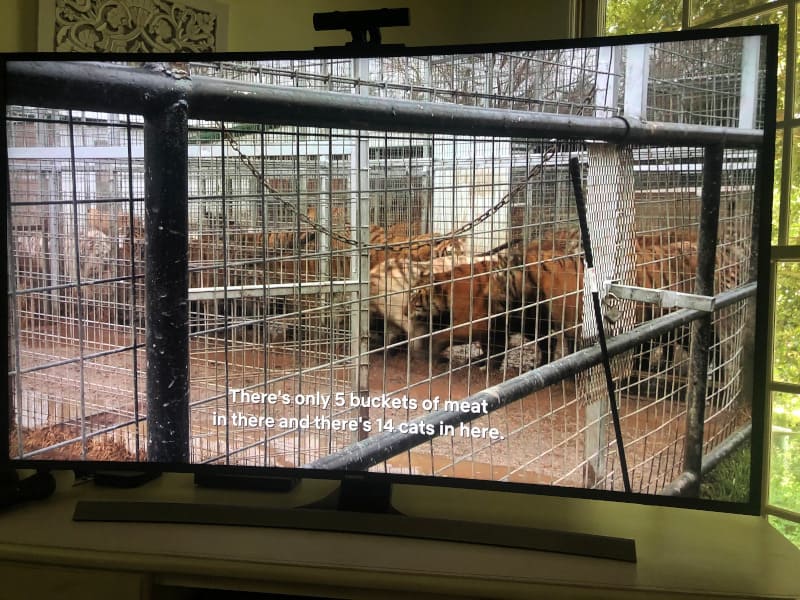
The cages were not only small, but not in the greatest condition. At many points in the docuseries, you tigers running around in water and mud, meaning their feet were constantly wet.
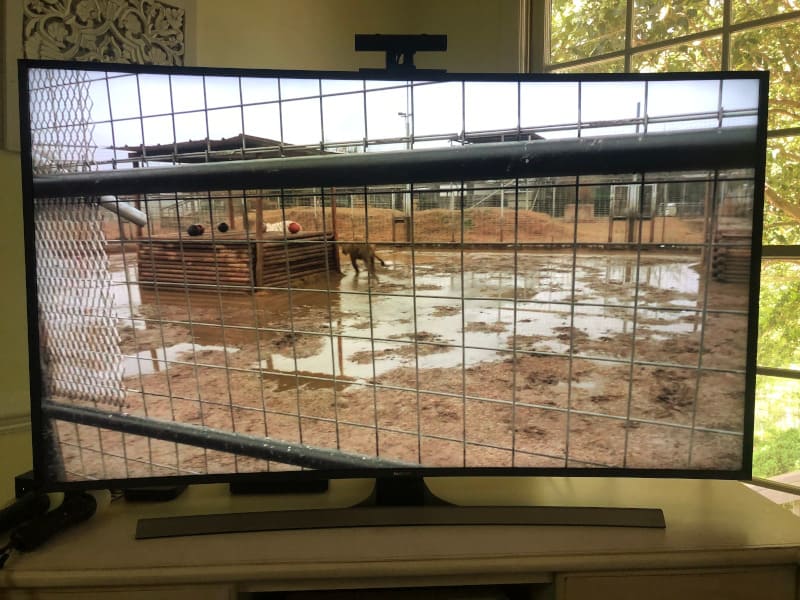
Seeing the chimpanzees in the small cages and separate from one another was incredibly heartbreaking. Chimpanzees are among the most intelligent animals on Earth and are socially complex. Joe later gave them to a sanctuary and the first thing they did was hug each other after they went there.
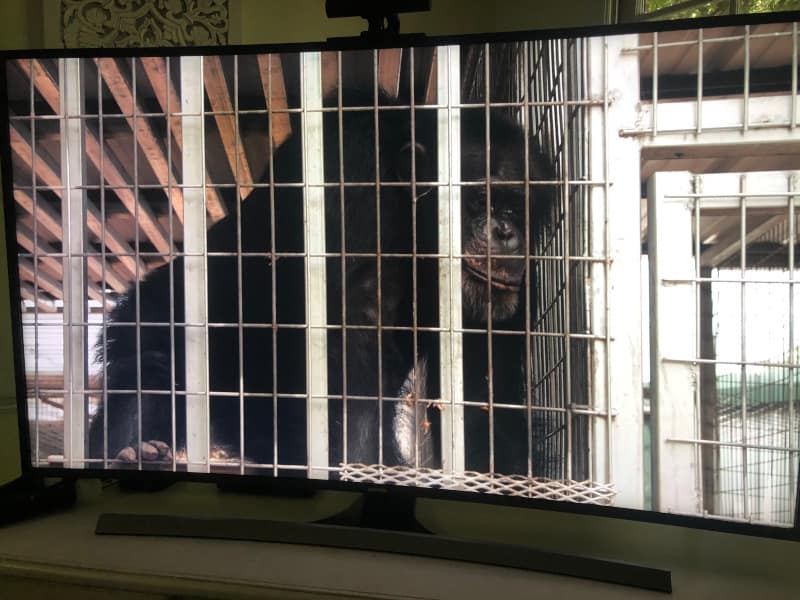
Finally, it appears that Joe set fire to his studio and killed the alligators and crocodiles next to the studio. In one scene, Jeff Lowe is yelling at Joe Exotic in the office and tells him to take care of something like how he did with the studio. Joe does not fight back or correct the statement, making me think that he probably was the one to arrange for the studio to be set on fire.
I do believe that Joe Exotic started out with good intentions and in the beginning did love his animals. He even started out rescuing animals as sanctuary. But it was clear throughout both the Tiger King documentary and podcast that once the zoo was profitable and Joe Exotic was becoming known, animal welfare was low on the list. If Joe Exotic really loved his animals, he would never have shot them or let them live in the conditions they did.
Now that we’ve gone through the Tiger King Zoo, take a look at my breakdown of Big Cat Rescue to see for yourself if they are the same. I evaluated the same things: if and how they contribute to conservation, education, and their animal welfare standards.
For more Tiger King talk, check out my podcast episode on animals in captivity.
The Latest – 10/8/2020:
National Geographic reports that at the Tiger King Zoo owned by Jeff Lowe that “At two separate inspections over the summer, the USDA found underweight bears, arthritic wolves lying on concrete, big cats with open sores caused by maggots, and an unresponsive lion cub named Nala.”
Read the full story here.
Love this post? Share it with friends!



